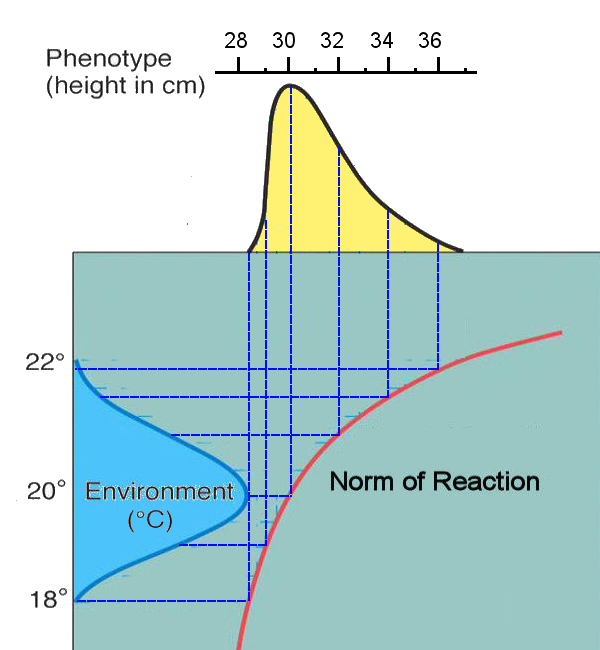
The Norm of Reaction
Phenotypic
variation (X-axis, top)
for any particular trait is a function of the range of
environmental variation (Y-axis). In the example, plants
grown in cooler environments are shorter than those grown in
warmer temperatures. The Norm of
Reaction is a curve
that models this relationship as due to
a complex, multi-locus genotype.
The curve can be thought of as a "genetic mirror" that
"reflects" environment
through genotype onto the phenotype. The
curvature of the norm of reaction need not be constant. At
lower temperatures, the curve is steep: an increase of 2.0 oC from 18oC - 20oC shifts the population phenotype
from a small number of shorter plants to the modal number with
higher height. At higher temperatures, the curve is shallow: a
2.0oC increase from
21oC - 22oC produces a more modest effect.
The Norm of Reaction is a population rather than an individual genetic concept. In the example, a group of plants with the same genotype raised in a "common garden" whose temperature ranges over 18 ~ 22 oC are expected to vary in height from 28 ~ 36 cm with a mode of 30 cm, skewed toward taller plants. In a environmental chamber held at a constant 20oC most plants will have a height of 30 cm, with variation dependent on the heritability of height.
The Norm of Reaction is a population rather than an individual genetic concept. In the example, a group of plants with the same genotype raised in a "common garden" whose temperature ranges over 18 ~ 22 oC are expected to vary in height from 28 ~ 36 cm with a mode of 30 cm, skewed toward taller plants. In a environmental chamber held at a constant 20oC most plants will have a height of 30 cm, with variation dependent on the heritability of height.